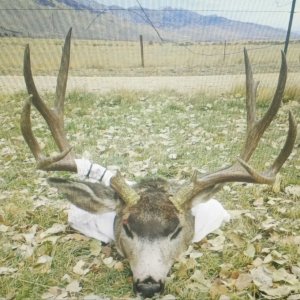Deer in riggins killed to control exotic louse infestation
With help from USDA Wildlife Service, Idaho Fish and Game killed about 60 mule deer in Riggins to help stop the spread of an infestation of exotic lice.
In March 2009, a male mule deer about nine months old suffering from hair loss was reported in Riggins. Officials who responded found the deer dead and sent it to Idaho's Wildlife Health Lab for a necropsy. The animal was emaciated, with evidence of pneumonia and thousands of lice on the body - exotic lice not previously reported in Idaho.
The lice were first detected in the western U.S. following translocations of fallow deer and axis deer to the West Coast more than 40 years ago.
Infestation causes skin irritation and excessive scratching, resulting in hair loss. Hair loss is most common in late winter and early spring, and the affected deer may die as a result.
While an infestation of the louse may cause the death of deer, it has no known health concerns for humans or domestic animals.
Idaho Fish and Game's investigation has found the number of infested deer in Riggins has grown to about 75 to 80 percent. Attempts to control or eliminate the lice and to prevent their spread to adjacent deer populations include reducing deer numbers.
Using Wildlife Services was the most expedient means of reducing deer numbers in Riggins. Public hunts would not have been effective because of private property access and safe-fire zone issues.
Meat from the animals is being processed and will be turned over to local area food banks.
Fish and Game will continue to monitor for the exotic louse in the area and will consider other management options should infestations continue.
Wildlife veterinarians also hope to learn more about the health of the affected deer, and about how the lice spread. They hope to develop a program to prevent or treat future infestations.
For information about the exotic louse go to
http://wdfw.wa.gov/conservation/health/hair_loss/index.html.















